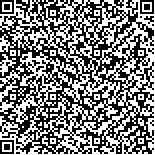王双,何志文,裴亚,等.呼吸模式干预对吸吮-吞咽-呼吸协调障碍早产儿经口喂养表现的影响[J].中华物理医学与康复杂志,2021,43(6):494-498
扫码阅读全文

|
| 呼吸模式干预对吸吮-吞咽-呼吸协调障碍早产儿经口喂养表现的影响 |
|
| |
| DOI:10.3760/cma.j.issn.0254-1424.2021.06.003 |
| 中文关键词: 早产儿 经口喂养 吸吮 吞咽 呼吸 |
| 英文关键词: Pre-term infants Oral feeding Sucking Swallowing Breathing |
| 基金项目: |
|
| 摘要点击次数: 5688 |
| 全文下载次数: 8052 |
| 中文摘要: |
| 目的 观察呼吸模式干预对吸吮-吞咽-呼吸(SSwB)协调障碍早产儿经口喂养表现的影响。 方法 选取符合入选和排除标准的SSwB协调障碍早产儿60例,按随机数字表法分为观察组(30例)和对照组(30例)。对照组早产儿采取常规喂养训练,包括口腔运动干预、非营养性吸吮训练和喂奶过程中的吞咽诱导训练等。观察组在常规喂养训练的基础上增加呼吸模式干预训练,包括呼吸模式观察、进食前呼吸抗阻训练和进食过程中的呼吸干预,每日训练1次,每次训练15 min。治疗前和治疗1周后(治疗后),观察并记录2组患儿的经口喂养准备量表(PIOFRA)评分、吮奶速率、喂养成效、血氧饱和度最低值和波动次数,并对所得数据进行统计学分析。 结果 治疗后,2组患儿各项评价指标均较组内治疗前均显著改善,差异均有统计学意义(P<0.05);且观察组患儿的PIOFRA评分、吸吮速率、喂养成效、血氧饱和度最低值、血氧饱和度波动次数分别为(33.28±0.58)分、(2.76±0.36)ml/min、(73.85±6.49)%、(85.46±5.31)%、(2.04±1.28)次,均显著优于对照组治疗后,组间差异均有统计学意义(P<0.05)。 结论 在常规康复干预的基础上辅以呼吸模式干预,可在较短时间内改善SSwB协调障碍早产儿吞咽过程中的呼吸协调性,可有效地改善早产儿的经口喂养表现。 |
| 英文摘要: |
| Objective To investigate the effect of a breathing pattern intervention (RPI) on the oral feeding of pre-term infants with suck-swallow-breath (SSwB) coordination disorder. Methods Sixty pre-term infants with SSwB coordination disorder were divided into an observation group (n=30) and a control group (n=30) using a random number table. Both groups were given routine feeding training, including oral exercise intervention, non-nutritive sucking training, and swallowing induction training during nursing, while the observation group was additionally provided with 15 minutes of breathing pattern training once a day, including breathing pattern observation, resistive breathing training prior to eating and passive breathing pattern intervention during eating. Before and after the 7-day intervention, the Pre-term Infant Oral Feeding Readiness Assessment (PIOFRA) was used to evaluate each subject′s oral feeding ability. Rate of transfer (RT), proficiency (PRO), minimum oxygen partial pressure (SaO2) and SaO2 fluctuations were also recorded during the feeding process. Results After 1 week of the intervention, significant improvement was observed in both groups. In the observation group the average RT (2.76±0.36ml/min), PRO, minimum SaO2, the number of SaO2 fluctuations, and PIOFRA score (33.28±0.58) were all significantly better than the control group′s averages. Conclusion Breathing pattern intervention based on routine feeding training can enhance breathing coordination during swallowing and ultimately improve the oral feeding of pre-term infants with SSwB coordination disorders in a relatively short period of time. |
|
查看全文
查看/发表评论 下载PDF阅读器 |
| 关闭 |
|
|
|